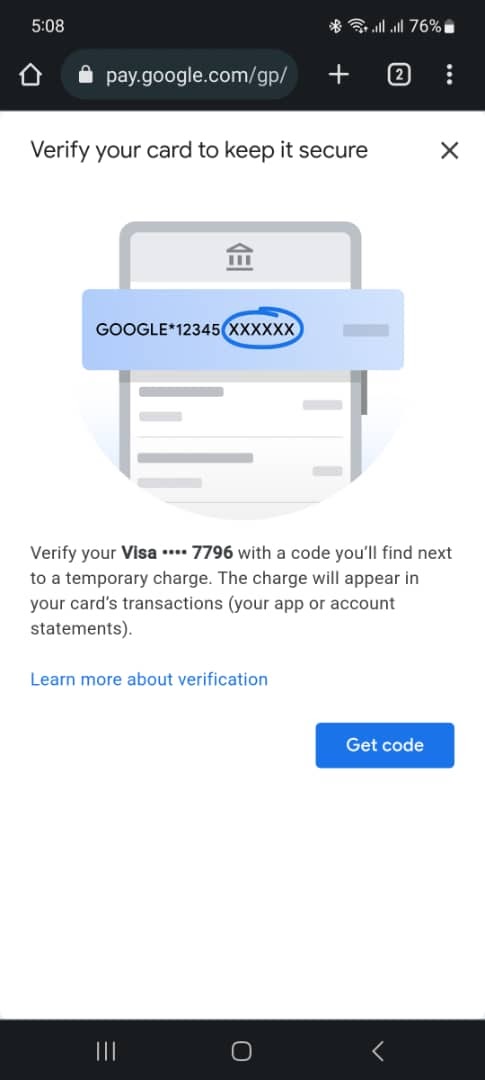
In the age of digital communication, we rely heavily on our online accounts to stay connected with the world. Google, as one of the leading technology giants, plays a crucial role in our digital lives. To protect the security and privacy of its users, Google employs various authentication mechanisms, including verification codes. However, receiving frequent verification codes can be a frustrating experience, leaving us wondering why this happens and what we can do about it.
As we delve into this topic, we’ll explore the reasons behind Google’s verification code system, discuss the latest trends and developments in online security, and provide expert advice to help you navigate this issue effectively.
Google verification codes are part of Google’s multi-factor authentication (MFA) process, which enhances account security by requiring users to provide multiple forms of identification when accessing their accounts. These codes are typically sent via SMS, email, or generated through an authenticator app on your mobile device.
Whenever you sign in to your Google account from a new device or location, Google may send you a verification code to verify your identity. This is done to prevent unauthorized access and ensure that only you can access your account. Additionally, Google may also send verification codes when you make certain changes to your account settings, such as adding a new payment method or changing your password.
The increasing prevalence of cyber threats and data breaches has made it more important than ever for internet users to prioritize their online security. Google has been at the forefront of developing and implementing innovative security measures to protect its users from phishing attacks, identity theft, and other malicious activities.
In recent years, Google has introduced several advancements to its verification code system, including the use of physical security keys, biometric authentication, and AI-powered fraud detection algorithms. These measures aim to make it even harder for attackers to bypass Google’s security protocols and gain access to user accounts.
To effectively manage Google verification codes and minimize the frequency of receiving them, consider implementing the following expert advice:
1. Enable two-factor authentication (2FA) for all your online accounts: 2FA adds an extra layer of security to your accounts, requiring you to provide a verification code in addition to your password when logging in. This makes it much harder for attackers to gain access to your accounts, even if they have your password.
2. Use a strong and unique password for your Google account: A strong password is at least 12 characters long and contains a combination of upper and lowercase letters, numbers, and symbols. Avoid using common words or phrases that can be easily guessed.
3. Be cautious of phishing emails and websites: Phishing scams attempt to trick you into revealing your personal information, including your Google verification codes. Be wary of emails or websites that ask you to provide your verification code or other sensitive information.
4. Install an authenticator app on your mobile device: Authenticator apps, such as Google Authenticator, generate time-based one-time passwords (TOTPs) that can be used as an alternative to SMS or email verification codes. This is a more secure option as it does not rely on your phone number or email address, which can be compromised.
Q: Why do I keep getting Google verification codes even when I’m not trying to log in to my account?
A: This could be a sign that someone else is trying to access your account. It’s important to change your password immediately and enable 2FA to prevent unauthorized access.
Q: I’m not receiving Google verification codes. What should I do?
A: Check your spam or junk mail folder. If you still can’t find the code, try requesting a new one. If you’re still having trouble, contact Google support for assistance.
Q: Can I turn off Google verification codes?
A: Yes, you can turn off Google verification codes by disabling 2FA for your account. However, it is strongly recommended that you keep 2FA enabled for enhanced security.
Understanding why Google sends verification codes and implementing effective security measures is crucial for protecting your online accounts. By following the expert advice and FAQs provided in this article, you can minimize the frequency of receiving verification codes and ensure the security of your Google account and personal information. Stay vigilant and proactive in your online security practices, and don’t hesitate to seek assistance if you encounter any issues with Google verification codes or other security concerns.
Are you interested in learning more about Google verification codes and online security? If so, leave a comment below and I’ll be happy to provide additional information and support.
